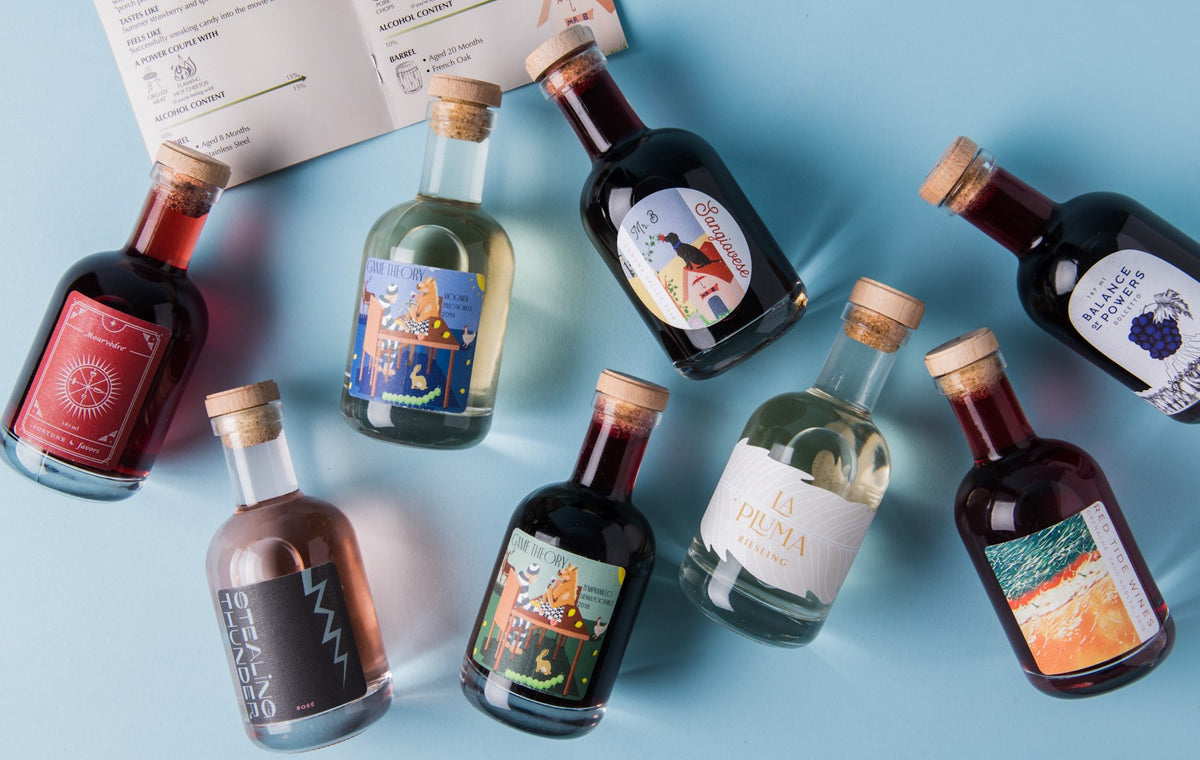Achieving Perfect Serving Temps
Many of us have a simple approach to chilling wine: throw the whites in the fridge, and serve the reds at room temperature. While this is easy, it results in red wines served too warm, and white wines served too cold. To help you get the most longevity, aroma, and flavor out of your wine collection, we’ve compiled this guide to wine service and storage.
We know most wine isn’t intended for long-term storage and should instead be enjoyed within a few months of purchase. So, the most important questions are centered around serving: should red wine be chilled? What about rosés? How cold is too cold? How can you achieve the desired temperature?
The Perfect Wine Serving Temperatures
There’s no blanket rule for all wines. Due to differences in body, minerality, and sweetness, each style of wine – from red wines to rosé wines, white wines, sparkling wines, sweet wines, and fortified wines – will taste best at different serving temperatures. In general, light-bodied, sweet, or bubbly wines benefit from cooler temperatures, while fuller-bodied, fruitier, and more tannic wines taste better slightly warmer.
Of course, your preferences matter more than any expert’s guidance about the “right” serving temperatures. The best way to become familiar with your tastes and train your palette is to experiment with different wine tastes and temperatures to determine what you enjoy for each style. If you feel an alcoholic burn in your nose as you smell your wine, it’s probably too warm. If you can’t smell or taste the flavors in your wine, it’s too cold. Somewhere in between is just right.
You may have heard that red wines should be served at “room temperature;” however, this ambiguous descriptor is one of antiquity, referring to drafty old English castles, and actually refers to a cooler temperature than you might think. Use the table below as a general guide for wine serving temperatures:
45-50°F
-
Pinot Grigio / Pinot Gris
50-55°F
55-64°F
60-68°F
Adapted from the Wine and Spirit Education Trust
Some winemakers will provide recommended serving temperatures on the bottle or in accompanying notes, especially if the wine is made in an unusual style. For instance, In Good Taste makes our Grenache as a "chillable red," intended to be served at a more typically white wine temperature of 50°F.
Achieving the Desired Temperature
Knowing the right temperature for your wine is one thing; getting the wine to that temperature is another. We don’t all have multi-zone wine fridges to keep our wines ready to pour at a moment’s notice. (If you do, feel free to skip the rest of this section – and send me your wine fridge.) So, what can the rest of us do?
-
Good: use the fridge. This method can take a while because traditional glass wine bottles are thick (and therefore good insulators). For a normal-sized bottle in a 40°F fridge, budget about an hour for every 10°F you need to chill the wine. If your wine bottle has been sitting at 75°F, and you want it at 55°F, leave it in the fridge for two hours.
-
Faster: use the freezer. In a 0°F freezer, you can get 10°F of chill in about 20 minutes. So, the same cooling operation that would take two hours in the fridge would take just 40 minutes in the freezer. But don’t forget about your wine and let it freeze!
-
Fastest: break out an ice bucket. Fill an ice bucket with both ice (⅔) and water (⅓). Since water is a much better conductor than air, this method can chill a bottle in just 15 minutes! Besides, ice buckets look classy. Don’t forget to submerge the bottle fully, so that the wine in the neck cools too.
Solid Tip: Don’t drop in an ice cube. We don’t recommend using ice cubes in the glass to chill your wine. Real ice will quickly melt and water down your delicious vintage. Metal ice cubes pose a hazard to your delicate glassware (and your teeth). Alternatively, you can add frozen grapes to your glass of vino to chill it quickly. This cutesy life hack adds points for style (and snackability) when you coordinate red grapes in red wine or green in white wine. Just be sure to opt for organic grapes, and rinse well before freezing.
Wine Storage Temperatures
If you have bottles you’ll be hanging on to for a while, how to store wine is just as important as how to drink it. Wine keeps best when stored on its side (for cork-sealed bottles) in a cool, dark place. But how cool is “cool”? Temperatures above 70°F age wine rapidly; temperatures below 45°F risk drying out the cork. The optimal wine storage temperature is somewhere in the middle.
If you have a dedicated wine fridge, 55°F is a good choice for medium-term storage. Avoiding temperature extremes and swings is more important than hitting that perfect 55°F, though. If you’re a serious collector who will hold wines for 5+ years, you need more than a countertop wine fridge – build yourself a proper heat- and humidity-controlled cellar, or invest in professional storage.
The Bottom Line
Use guides like this one as a starting point, but don’t feel compelled to follow them. I keep my wines in a wine fridge and then move them to the fridge (whites, rosés, sparkling wines) or countertop (reds) briefly before drinking. I try to approximate the recommended temperatures, but I’m not a stickler for sticking a thermometer in my glass before I drink. My grandma puts ice cubes in her wine, regardless of varietal. I tease her about that, but if it adds to her enjoyment, she shouldn’t stop. If your wine tastes good to you, you’re drinking it right.










